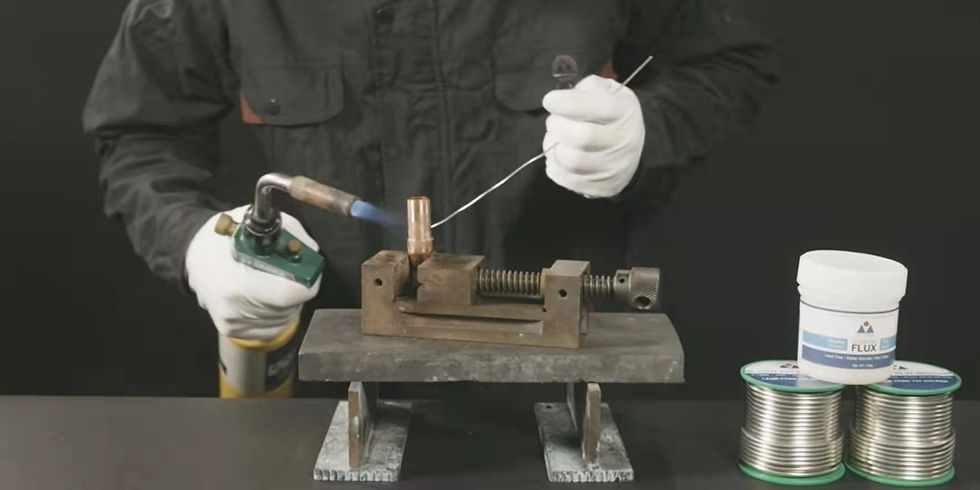Fundamentals of Brazing Flux
- Tony, the Welder

- Jun 16, 2020
- 2 min read
Updated: Jul 31, 2020
Brazing flux is the solvent used during brazing processes. When used in association with brazing filler metals, brazing flux facilitates a smooth brazing process and ensures high joint quality. Functions of brazing flux include: removal of oxides on the surface of molten solder and base metals, protection of filler metals and base metals from oxidation during brazing, enhancement of interface activity, and improvement of liquid solder wettability on the base metals.
Generally, flux is not required for vacuum brazing and furnace brazing under protective atmosphere, and it is also not needed for brazing copper and copper alloys using copper-phosphorus filler metals with self-fluxing ability. Apart from the above mentioned exceptions, flux is required for all other brazing conditions.
In order to realize the designated functions of brazing flux, the flux selected should meet the following requirements: 1. It can thoroughly dissolve or destroy the surface oxide film on filler metals and base metals; 2. Its melting point and minimum active temperature should be lower than the melting point of filler metal 3. It has low density, low viscosity and good fluidity within the brazing temperature range; 4. Brazing flux and residue have low corrosiveness, and residue is easy to clean.
Classification of brazing flux is compatible to that of brazing filler metals, and it is commonly divided into soldering flux, brazing flux, brazing flux for aluminium and so on. Soldering flux refers to flux used for processes with brazing temperatures below 450°C (842 °F). Brazing flux is used for processes in which brazing temperature is higher than 450°C (842 °F), and it is mostly in powder, paste and liquid forms. One of the more common brazing flux is FB3-D, and its active temperature range is 760 – 1205 °C (1400 – 2201 °F); when using FB3-D with RBCuZn-D brazing alloys to braze 304 stainless steel, brazing temperature is recommended to be 1010 °C (1850 °F). FB3-F is another popular product, and it has an active temperature range of 650 – 870°C (1202 – 1598 °F); FB3-F brazing flux is commonly used with BAg-7 brazing alloy to braze 321 stainless steel, and its brazing temperature is 705 °C (1301 °F).
The presence of brazing flux residue often has a negative impact on braze joints, and removal of residue after brazing is crucial. Flux residue can be cleansed in hot water of at least 65 °C (149 °F) or hot 10% citric acid solutions. If the mentioned solutions are not sufficient for cleaning, cold 5% sulfuric acid solutions can also be used, however in this case it is important to control cleaning time duration. Moreover, for quenchable parts, water quenching the weldments while they are still warm may facilitate the removal of flux residue. After completion of all cleaning processes, weldments should be dried thoroughly to ensure braze joint quality.




Comments